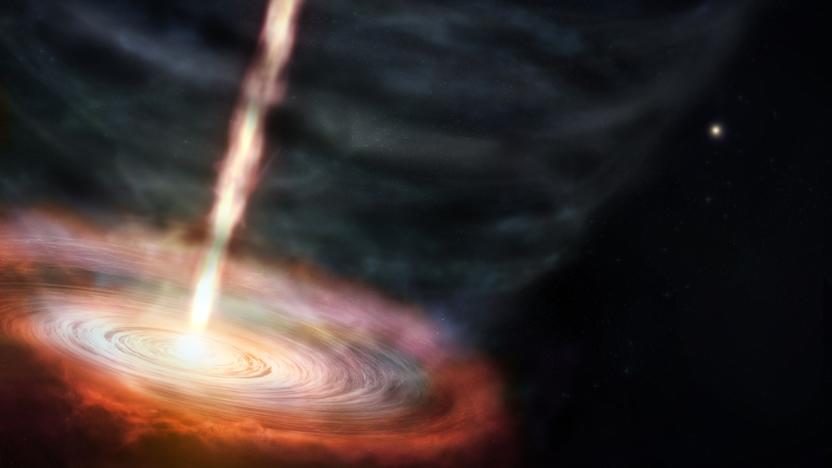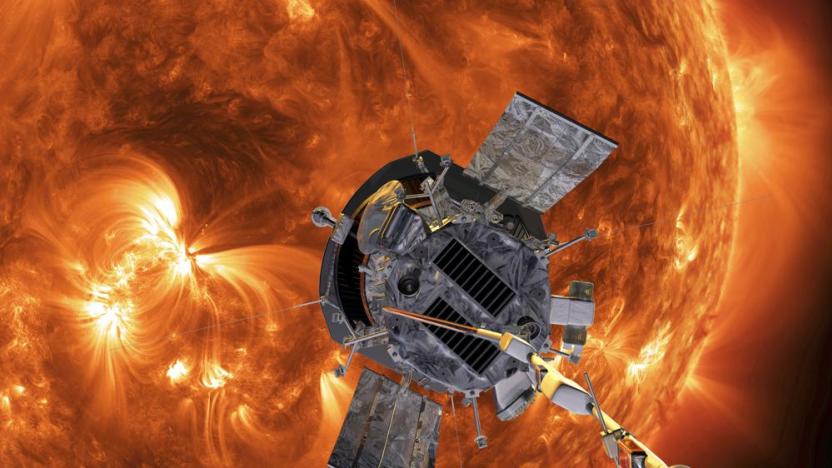solar wind
Latest

What an 'oddball' star in the Cygnus cluster can teach us about how masers are made
Researchers with the National Radio Astronomy Observatory may have uncovered a significant insight into how masers (nature's lasers) are formed while conducting a routine study of the "oddball" star MWC 349A.

NASA spacecraft enters the Sun's corona for the first time
The Parker Solar Probe has become the first spacecraft to fly through the Sun's upper atmosphere or corona.

NASA's closest-ever Sun flybys reveal how solar wind works
As promised, NASA has presented the first results from the Parker Solar Probe -- and they're already providing a treasure trove of insights regarding the Sun. Most notably, the solar wind doesn't behave entirely like scientists expected. There are flips in the Sun's magnetic field direction (nicknamed "switchbacks") that manifest in the solar wind inside Mercury's orbit, but not further. Moreover, the sideways movement of the solar wind near the Sun was not only "much stronger" than expected, but straightened out sooner than predicted as well.

NASA going to the Sun, Jay Leno readies 'hot' jokes for coming years
Our favorite aerospace exploration organization will finally fulfill a 1958 recommendation from the National Academy of Sciences by sending the Solar Probe Plus into the Sun's atmosphere. It will be the first time any craft visits a star -- previous data have been collected from at least millions of miles away. Why the personal visit? Two main reasons: to determine why the sun's corona is millions of kelvin hotter than its visible surface, and to learn more about how that solar wind we've been hearing so much about lately gets accelerated. Look out for answers to these and other burning questions (we're getting started early!) sometime before 2018.

IKAROS gets first burst of solar propulsion, wants more
Photons, man, it's all about the photons. Japan's solar sail-equipped IKAROS probe has recorded its first propulsion derived from the force of sunlight rays hitting its tender surface. The force generated is a truly minuscule 1.12 millinewtons, but that can go a long way (literally) in a frictionless environment like space. The kite's sails also soak up Sol's emitted light to generate electricity, making the most out of the one resource available to it. So now that we've figured out how to do all that, shall we get started on colonizing Mars or what?



